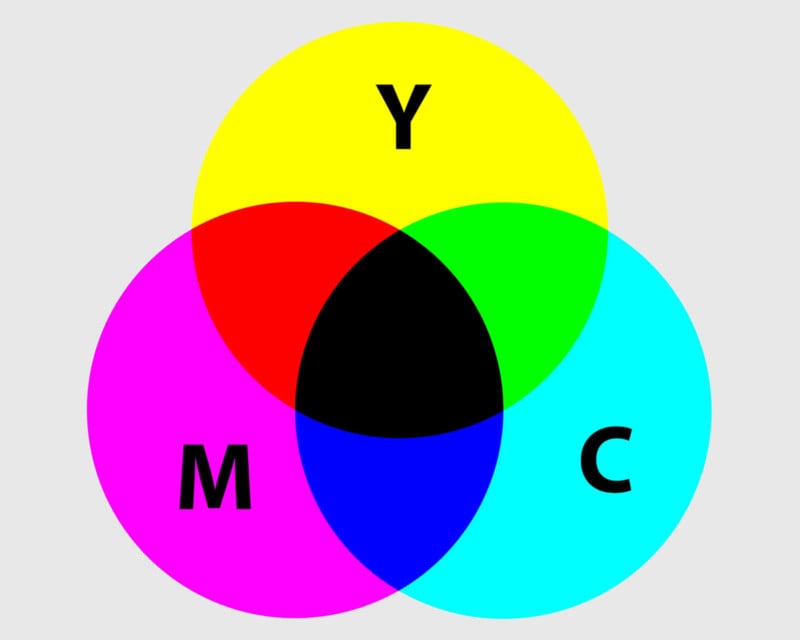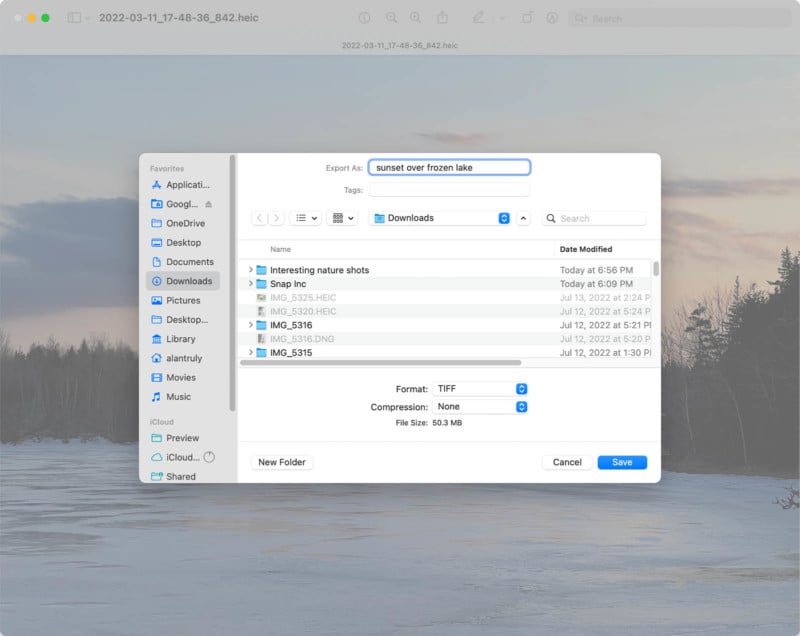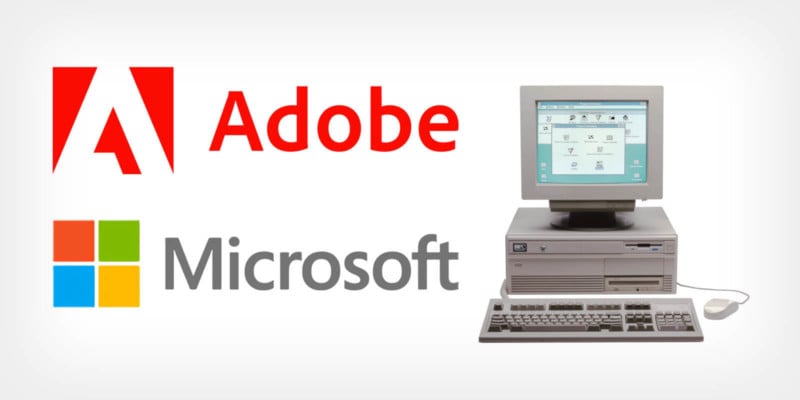[ad_1]
![]()
TIFF is a reasonably frequent file kind and is usually requested by print companies because it was made with printing in thoughts by an organization that developed desktop publishing apps. TIFF has been round for a very long time and could be very versatile, dealing with black and white, varied coloration areas, reminiscent of CYMK, RGB, and even spot colours with ease.
There are downsides to a file format that may do almost every little thing, and that’s bloat. A picture saved as a TIFF file is bigger than almost some other format so understanding when to make use of it will possibly save fairly a little bit of space for storing.
Desk of Contents
What Does TIFF Stand For?
The Tag Picture File Format (TIFF) was created in 1992 and is a really versatile file kind that may be prolonged by builders to cowl all kinds of makes use of. The format is often known as Tagged Picture File Format and the proprietor, Adobe, makes use of each in its documentation. That is performed by using tags that accommodates details about the kind of compression used, transparency, and picture bitmap information, in addition to printer-specific info reminiscent of coloration house, decision, halftones, and inks. Non-public tags are additionally out there for organizations to customise TIFF recordsdata additional and may be registered with Adobe.
Is TIFF an Uncompressed Picture Format?
Whereas TIFF recordsdata can use JPEG compression, which is called a lossy format, TIFF’s major use is for lossless pictures. JPEG format must be used when it’s identified prematurely that file measurement must be restricted because it’s a extra direct illustration. Lossless doesn’t at all times imply uncompressed and TIFF recordsdata can use Lempel-Ziv-Welch (LZW) compression, which encodes easy sequences with out shedding any picture information. LZW is handiest for pc graphics, nonetheless.

Images not often have the type of actual repetitions that might profit from the sort of compression. Meaning images which might be saved as TIFF recordsdata are sometimes uncompressed. It’s potential to repeatedly open a lossless TIFF, make edits, and put it aside once more as a TIFF with none discount in high quality.
Ought to All Photographs be Saved as TIFF Information?
After enhancing a JPEG picture, saving it as a TIFF file prevents one other layer of compression artifacts from being added. This is likely to be a essential step in a workflow if additional enhancing will probably be performed. Repeatedly enhancing and saving as JPEG will progressively deteriorate {a photograph} to the purpose that it’s going to ultimately develop into unusable. Saving in a lossless format reminiscent of TIFF permits ongoing edits to happen with out damaging the image any additional.
Then again, many paint and photograph enhancing apps save in a proprietary lossless format already so this won’t be a priority. Additionally, some JPEG manipulations may be performed with out requiring recompression. Cropping, rotating, flipping, and enhancing metadata shouldn’t damage the standard of a JPEG if the app is dealing with the method appropriately.
There’s normally no want to avoid wasting each photograph as a TIFF. If an image captures a second completely or wants solely minimal enhancing, there’s in all probability no want to make use of the additional space for storing required by a TIFF file. RAW recordsdata are already the purest illustration of the unique {photograph} and require much less house than a TIFF file.
When to Use TIFF
TIFF permits using the selection of coloration house, reminiscent of CMYK and spot colours. These are colours utilized by some skilled printers with CYMK standing for cyan, magenta, yellow, and black ink. Spot colours are sometimes used for logos and for larger precision than CYMK permits. Since TIFF can use these print-oriented coloration areas, it’s typically most well-liked for web page structure and publishing. As a lossless file format, enhancing may be performed with out including compression artifacts.

Whereas TIFF is nice for images that will probably be printed, it isn’t a perfect format for paperwork. A PDF file is healthier on this case since it will possibly comprise bitmap pictures in addition to super-efficient vector graphics, and textual content utilizing stylized fonts way more effectively than TIFF can. TIFF stays the best choice for printing images even when the picture is wrapped inside a PDF file.
Generally, TIFF is an efficient selection for picture recordsdata which might be in progress however must be moved between apps or areas. If an image will probably be utilized in a web page structure program, despatched to a print service, or when a doc is scanned, TIFF is likely to be the popular format.
The place Can I Use TIFF?
TIFF pictures may be saved from most print-oriented apps and plenty of paint and photograph apps can export a picture in TIFF format. Apps from Adobe, Affinity, Corel, Pixelmator, and the open-source app GIMP are examples of how frequent it’s to assist TIFF pictures. Almost each desktop publishing app helps TIFF recordsdata.
Apple’s Preview app, which is constructed into macOS, can open and save TIFF recordsdata. Microsoft’s Photographs app opens and saves TIFF pictures when utilizing Home windows. Linux handles TIFF pictures with the open-source ImageMagick library. Meaning TIFF recordsdata are broadly supported on most computer systems. A Chromebook, nonetheless, wants an app to view or save a TIFF file.

Even on cellular gadgets, Apple Photographs can open TIFF recordsdata on an iPhone or iPad and Google Photographs can be utilized to view them on Android gadgets.
What’s the Distinction Between TIFF and TIF Information?
A TIFF file can use an extension of .tiff or .tif and most trendy computer systems will acknowledge it appropriately as Tag Picture File Format. The 2 file sorts confer with the identical picture format. The one purpose for .tif to exist is to honor the constraints of early computer systems that had been programmed to grasp file extensions that had been solely three characters lengthy. Trendy working techniques like Home windows, macOS, and Linux can deal with longer extensions with out a downside and .tiff will work simply in addition to .tif so long as an app is put in that may view the picture.
Alternate options to TIFF: JPEG, PNG, PDF, and DNG
As talked about above, TIFF may be compressed however is primarily considered an uncompressed picture format, so JPEG is most well-liked for picture recordsdata that have to have the dimensions restricted to cut back obtain occasions and storage necessities. TIFF can use a lossless compression that saves a little bit of house when storing some sorts of pc graphics. Transportable Community Graphics (PNG) is one other frequent picture format that has a lossless compression and is extra environment friendly on this case.
Since TIFF is oriented towards print use, PDF is one other file kind to think about. PDFs can comprise PNG and JPEG-encoded pictures, vector graphics, textual content, and fonts. A PDF may comprise TIFF pictures, making it much more versatile and way more environment friendly for full paperwork.
RAW picture codecs, reminiscent of Digital Damaging (DNG) and manufacturer-specific equivalents can outperform TIFF format when storing images for later enhancing since a RAW picture accommodates camera-specific picture info taken immediately from the picture sensor. Enhancing a RAW picture is the closest a photographer can get to what was initially captured with the digicam. RAW recordsdata are usually smaller than the identical picture saved as a TIFF.
Who Made TIFF and Why?
TIFF was collectively developed by Aldus (which was later acquired by Adobe) and Microsoft Firms and is now owned by Adobe. Desktop publishing was in its infancy within the late Eighties and early Nineteen Nineties and Aldus developed lots of the main options. As a serious power within the trade, the corporate was able to introduce some much-needed requirements and TIFF offered a strong picture format for printing and scanning. This utilization is mirrored by its potential to retailer web page quantity, place, decision (horizontal and vertical), and coloration house.

Conclusion
TIFF is a really previous picture format however continues to be used incessantly within the print trade and plenty of scanners nonetheless have an choice to avoid wasting as TIFF recordsdata. That’s a testomony to how well-designed the format is for these functions. RAW format or JPEG is a more sensible choice for storing images and PNG or a vector format reminiscent of scalable vector graphics (SVG) is preferable for pc graphics. Changing to TIFF format is likely to be finest used as a last step after the enhancing of a RAW picture is full and the file is being ready for printing.
[ad_2]
